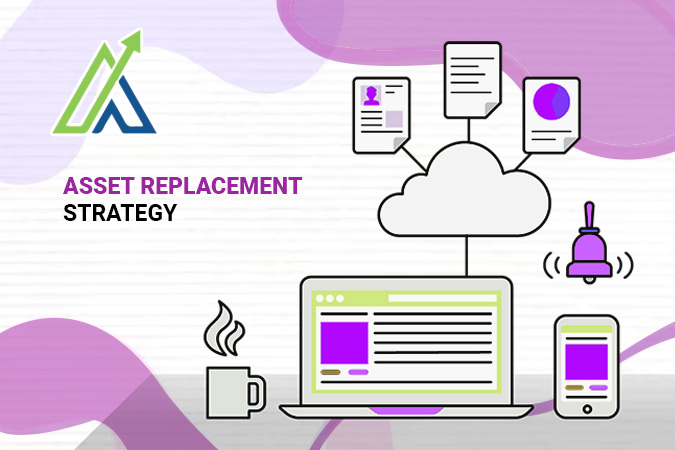Asset replacement strategy keeps businesses sharp and competitive. It’s about ditching old, inefficient assets for new ones to boost productivity and slash costs. Nailing this strategy means understanding your long-term goals, financial limits, and risk tolerance. Get it right, and you’re set for sustainable growth and smooth operations.
What is Asset Replacement?
Asset replacement is about swapping out old, inefficient assets for new ones. This is crucial for businesses to maintain productivity and cut operational costs. In India, where market conditions can shift rapidly, a smart asset replacement strategy can help businesses thrive.
How Do You Align Asset Replacement with Long-term Business Goals?
First, your asset replacement strategy must match your long-term business goals. Think about how replacing assets will support these objectives.
Example: If a factory aims to boost production by 30% in five years, investing in modern, efficient machines is crucial.
Aligning asset replacement with your goals ensures every investment drives growth and efficiency, helping the business stay ahead of market changes.
How can you work within Financial Constraints?
Financial constraints heavily influence asset replacement decisions. Indian businesses, especially SMEs, often face budget limits. Balancing the need for new assets with available funds is essential.
Example: A small textile manufacturer needs a new loom but has limited cash. Instead of buying outright, they might lease the loom or use government subsidies.
Businesses can also replace assets in phases, focusing on critical ones first. This spreads the cost over time, easing financial pressure.
How to understand Risk Tolerance?
Risk tolerance varies. Some companies are risk-takers, while others play it safe. Knowing your company’s risk tolerance is vital for asset replacement.
Example: A tech startup might invest in cutting-edge equipment despite high costs, aiming for a competitive edge. An established manufacturer might prefer gradual upgrades to avoid risks.
Assess risk tolerance by considering the impact of asset failure, downtime costs, and available backup plans. Market volatility and economic conditions also affect risk levels.
What are the Steps for a Strategic Asset Replacement?
- Conduct an Asset Audit: Evaluate the condition, performance, and lifespan of current assets. Identify which ones are near the end of their useful life.
Example: A logistics firm audits its truck fleet, looking at maintenance costs and breakdown frequency to decide which trucks need replacing. - Prioritize Replacements: Based on the audit, decide which assets need immediate attention. Consider their importance to operations and potential cost savings.
Example: A hospital might prioritize replacing old diagnostic equipment crucial for patient care. - Evaluate Replacement Options: Look at different options, like buying new, leasing, or refurbishing old assets. Consider total ownership costs, including maintenance and operating expenses.
Example: A construction company might weigh the pros and cons of buying new machinery, leasing, or refurbishing based on a cost-benefit analysis. - Create a Financial Plan: Outline the investment needed, funding sources, and expected returns. Use financial tools available in India, like loans, bonds, and equity financing.
Example: An agribusiness might combine bank loans and government grants to fund new irrigation systems. - Implement and Monitor: Carry out the replacement plan and set up monitoring to track performance and returns. Regularly review and adjust the strategy as needed.
Example: A retail chain could replace POS systems in phases, monitoring improvements in transaction speed and customer satisfaction.
Questions to Understand your ability
Qus: What’s the main point of an asset replacement strategy?
- To give employees a pay raise
- To keep things productive and cut costs
- To lay off staff
- To get a bigger office
Qus: Why match asset replacement with long-term business goals?
- Helps get loans from banks
- Ensures investments boost growth and efficiency
- Pumps up the company’s stock price
- Cuts down on staff training needs
Qus: How do businesses handle financial constraints in asset replacement?
- Ignore old assets, focus on new tech
- Lease equipment instead of buying
- Slash employee benefits
- Hike up product prices
Qus: What to consider when assessing risk tolerance for asset replacement?
- The marketing plans
- Impact of asset failure and downtime costs
- Trends in hiring
- New assets’ looks
Qus: What’s the first step in a strategic asset replacement?
- Launch new marketing campaigns
- Do an asset audit
- Hire more staff
- Enter new markets
Conclusion
In India, creating a strategic asset replacement plan involves aligning with business goals, managing financial limits, and understanding risk tolerance. By conducting asset audits, prioritizing replacements, evaluating options, and making financial plans, businesses can stay competitive and resilient. This approach not only boosts efficiency but also supports sustainable growth and long-term success.
FAQ's
Swapping old, inefficient assets for new ones to stay productive and cut costs.
Keeps operations smooth, cuts costs, and keeps you competitive.
Make sure asset replacements support overall growth and efficiency.
Tight budgets, especially for SMEs, mean balancing costs with funds.
Lease equipment, use subsidies, or replace assets in phases to spread costs.
Think about asset failure impact, downtime costs, and backup plans. Market volatility matters too.
Checking the condition, performance, and lifespan of current assets to see which need replacing.
Buy new, lease, or refurbish old assets. Weigh the costs and benefits of each.

